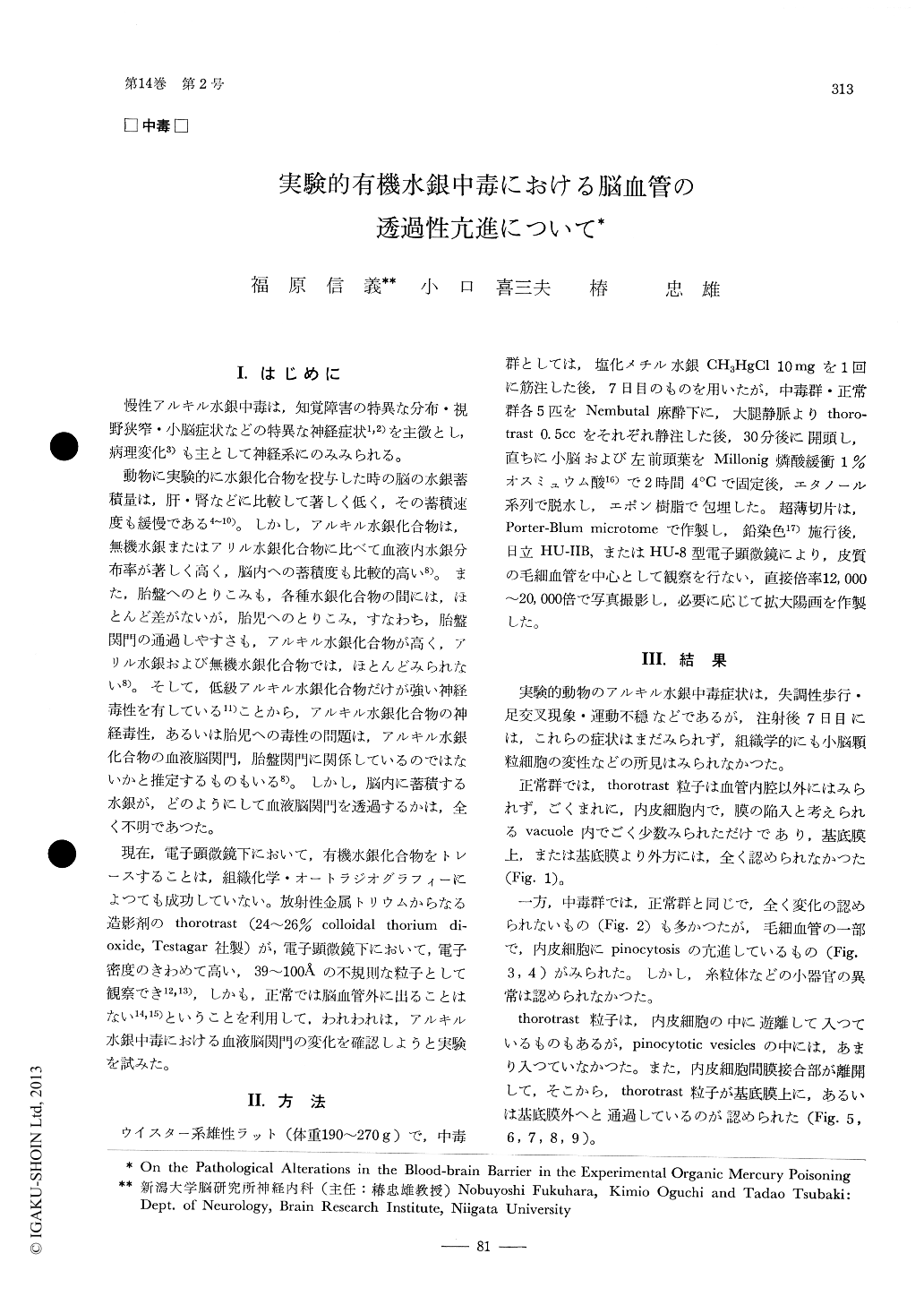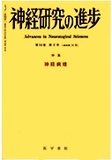Japanese
English
- 有料閲覧
- Abstract 文献概要
- 1ページ目 Look Inside
I.はじめに
慢性アルキル水銀中毒は,知覚障害の特異な分布・視野狭窄・小脳症状などの特異な神経症状1,2)を主徴とし,病理変化3)も主として神経系にのみみられる。
動物に実験的に水銀化合物を投与した時の脳の水銀蓄積量は,肝・腎などに比較して著しく低く,その蓄積速度も緩慢である4〜10)。しかし,アルキル水銀化合物は,無機水銀またはアリル水銀化合物に比べて血液内水銀分布率が著しく高く,脳内への蓄積度も比較的高い8)。また,胎盤へのとりこみも,各種水銀化合物の間には,ほとんど差がないが,胎児へのとりこみ,すなわち,胎盤関門の通過しやすさも,アルキル水銀化合物が高く,アリル水銀および無機水銀化合物では,ほとんどみられない8)。そして,低級アルキル水銀化合物だけが強い神経毒性を有している11)ことから,アルキル水銀化合物の神経毒性,あるいは胎児への毒性の問題は,アルキル水銀化合物の血液脳関門,胎盤関門に関係しているのではないかと推定するものもいる8)。
Studies were performed by electron microscopy with thorotrast (24-26% colloidal thorium di-oxide). Five male Wistar rats (190-270g) were used as the intoxicated group and another five as the control. The intoxicated rats were used seven day after the intramuscular injection of 10 mg methyl mercuric chloride (CH3HgCl). A half ml of thorotrast was injected into the rats of both groups and they were sacrificed after 30 minutes. The frontal lobes and cerebella were fixed for electron microscopic examination.

Copyright © 1970, Igaku-Shoin Ltd. All rights reserved.


